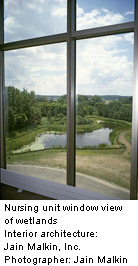Tharparkar desert in Sindh is the largest desert
of Pakistan and the eighteenth largest in the world with an area of
22,000 square kilometres. The population of Tharparkar is 1.5 million.
This is the only district in Pakistan where more than 50 percent of the
population are Hindus. The government has not conducted a proper census
after 1998 although analysts say that the population of Hindus in this
district is near 0.8 million. Out of this population more than 0.68
million are Dalits, who are more vulnerable than the Dalits of other
districts. Tharparkar district is divided into four talukas,
Nangarparkar, Chhachhro, Diplo and Mithi, with its headquarters in Mithi
city. There are about 2,400 villages in district Tharparkar, which are
highly populated with Dalit communities. The percentage of upper caste
Hindus in this district is only 15 percent like that of Sindh overall.
The land in Tharparkar is highly fertile but unfortunately most of it is
desert, so that production of crops depends on rains during summer.
Rains fall from mid-June to mid-August each year. For the last ten years
there have been drought conditions in Tharparkar due to which 50
percent of the overall population migrated to barrage areas to find
food, because during droughts it becomes hard for them to even find
water to drink, leave alone for growing crops. Before this drought there
have been problems of diseases in animals, first with peacocks and then
with sheep — the majority of these animals died. Sheep is standard
livestock for the Thari people and many were highly affected by disease
in the district. As per reports in the media, more than 5,000 sheep died
due to diseases in several areas of Tharparkar, which resulted in
increases in the selling price of sheep. Most of the people of
Tharparkar tried to escape to save their livestock but a few did not
because they did not want to leave their lands.
During drought-like
situations in Tharparkar, the majority of people in the agricultural
workforce eat meals of red pepper or onion and sometimes rabri (a
mixture of milk or curd and boiled grains). Their life is very simple;
they are kind-hearted people and never think to harm others. During
elections they don’t know who to vote for and usually cast their votes
on the direction of their Mukhya (village chief). The literacy rate is
low and most people who move during droughts to barrage areas find any
labour they can. In this way the education of their children is
neglected and because of a lack of money most children are pulled out of
school after a few years anyway. In its last survey, the Pakistan Hindu
Seva also found for some years now upper-caste Banyas and Pathans have
begun a business of looting the poor farmers by providing them with
loans of food against which they extract massive interest later when
crops are harvested, in this way keeping the poorer people without food
security. As a result of this and other poverty factors, many pregnant
women do not get proper medical treatment and food so that their babies
are born with abnormalities or susceptibility to diseases and early
deaths. Another fact that several people in Tharparkar told the Pakistan
Hindu Seva team was that in many villages people resorted to drinking
saline water due to which hundreds of children, men and women face
abdominal problems, while the colour of their teeth also becomes yellow
from long use of this water.
Even though the drought in Thar has
been ongoing for ten years, the government has not considered this issue
serious and the problem has been growing each year. People of
Tharparkar support the PPP because they remember the sacrifices of the
Bhutto family but they nonetheless think that the reign of dictator
Pervez Musharraf remained a golden time for them, when they were given
paths to economic improvement. Many of them miss that time when they
felt there was greater equality and no one was given superiority; their
honour was safe and their lands and homes were safer. The current
administration in Tharparkar under the PPP Sindh government, as members
of Makhdoom families, have little idea about the life of Tharparkar and
its people.
As per reports, more than 130 children have died due to
malnutrition and disease in Tharparkar district. Soon after it was
reported in the media that several NGO and government officials reached
there to prevent further losses. Each year hundreds of social
development programmes are initiated in Tharparkar with donations from
international development groups but no programme is properly
implemented and most become prey to corruption so that the issues of
unemployment, lack of education, and health continue to grow. Tharparkar
is considered the most backward area of Pakistan so that funds from
international donors are in the millions of dollars. The government
issues budgets for development, but it almost all goes to corrupt
leaders and does not reach the affected people. But it is heartening to
note that the deaths of dozens of innocent children have opened the eyes
of the Pakistani public and large amounts of support from private aid
organisations and the public, both through Islamic charities and others,
have been coming in, without any hint of discrimination.
Speaking
about Thar most people there told the Pakistan Hindu Seva that they are
not beggars and that if they find employment, the Tharparkar district
government and the Sindh government won’t need to help them during
drought periods as they would be able to handle it themselves. However
the major problem is finding employment even though they are very
hardworking people. Making smaller dams to stop water wastage during
rain can also stop the need for migration and prevent drought in
Tharparkar. The government and other development organisations must
create economic resources for the people of the area to find proper
employment and create economic possibilities for them to assist them in
leading a formal and permanent life in Tharparkar, so they can educate
their children and grow. Then they can make Tharparkar the peaceful,
heavenly place it has the potential to become.
CHILD LABOR IN PAKISTAN
|
| God has given human beings the boon of wisdom and discretion to think upon the signs of the universe and to draw conclusions. That is the reason why they disclose the hidden facts of it and its structure and have made remarkable progress in many walks of life. Children are the flowers of heaven. They are the most beautiful and purest creation of God. They are innocent both inwardly and outwardly. No doubt, they are the beauty of this world. Early in the morning when the children put on different kinds of clothes and begin to go to schools for the sake of knowledge, we feel a specific kind of joy through their innocence. |
 |
But there are also other children, those who cannot go to schools due to financial problems, they only watch others go to schools and can merely wish to seek knowledge.It is due to many hindrances and difficulties; desperate conditions that they face in life. Having been forced to kill their aspirations, dreams and other wishes, they are pressed to earn a living for themselves and for their families. It is also a fact that there are many children who play a key role in sustaining the economically life of their family without which, their families would not be able to make ends meet. These are also part of our society who have forgotten the pleasures of their childhood. When a child in addition to getting education, earns his livelihood, this act of earning a livelihood is called as child Labour. The concept of child Labour got much attention during the 1990s when European countries announced a ban on the goods of the less-developed countries because of child Labour.
The International Labour Organization (ILO) defines child Labour as:
1- when a child is working during early age
2- he overworks or gives over time to Labour
3- he works due to the psychologically, socially, and materialistic pressure
4- he becomes ready to Labour on a very low pay
Another definition states:
“Child Labour” is generally speaking work for children that harms them or exploits them in some way (physically, mentally, morally or blocking access to education),
United Nations International Children’s Emergency Fund(UNICEF) defines “child” as anyone below the age of 18, and “child Labour” as some type of work performed by children below age 18. (UNICEF)
 |
Child Labour is an important and a serious global issue through which all and sundry countries of the world are directly or indirectly affected, but, it is very common in Latin America, Africa and Asia. According to some, in several Asian countries’ 1/10 manpower consists of child Labour. In India the number of children between the ages of 10-14 has crossed above 44 million, in Pakistan this number is from 8 to 10 million, in Bangladesh 8-12 million, in Brazil 7 million, whereas their number is 12 million in Nigeria. |
During the year 2001 and 2002 the government of Pakistan carried out a series of consultation of tripartite partners and stakeholders (Labour Department, trade unions, employers and NGOs) in all the provinces. The objective was to identify the occupations and the categories of work, which may be considered as hazardous under the provisions of ILO Convention 182. As a result of these deliberations, a national consensus list of occupations and categories of work was identified, which is given below:
1. Nature of occupation-category of work
2. Work inside under ground mines over ground quarries, including blasting and assisting in blasting
3. Work with power driven cutting machinery like saws, shears, and guillotines, ( Thrashers, fodder cutting machines, also marbles)
4. Work with live electrical wires over 50V.
5. All operation related to leather tanning process e.g. soaking, dehairing, liming chrome tanning, deliming, pickling defleshing, and ink application.
6. Mixing or application or pesticides insecticide/fumigation.
7. Sandblasting and other work involving exposure to free silica.
8. Work with exposure to ALL toxic, explosive and carcinogenic chemicals e.g. asbestos, benzene, ammonia, chlorine, sulphur dioxide, hydrogen sulphide, sulphuric acid, hydrochloric acid, nitric acid, caustic soda, phosphorus, benzidene dyes, isocyanides, carbon tetrachloride, carbon disulphide, epoxy, resins, formaldehyde, metal fumes, heavy metals like nickel, mercury chromium, lead, arsenic, beryllium, fiber glass, and
9. Work with exposure to cement dust (cement industry)
10. Work with exposure to coal dust
11. Manufacture and sale of fireworks explosives
12. Work at the sites where Liquid Petroleum Gas (LPG) and Compressed Natural Gas (CNG) are filled in cylinders.
13. Work on glass and metal furnaces
14. Work in the clothe printing, dyeing and finishing sections
15. Work inside sewer pipelines, pits, storage tanks
16. Stone crushing
17. Lifting and carrying of heavy weight specially in transport industry ( 15b kg and above)
18. Work between 10 pm to 8 am ( Hotel Industry)
19. Carpet waving
20. Working 2 meter above the floor
21. All scavenging including hospital waste
22. tobacco process ( including Niswar) and Manufacturing
23. Deep fishing ( commercial fishing/ sea food and fish processing
24. Sheep casing and wool industry
25. Ship breaking
26. Surgical instrument manufacturing specially in vendors workshop
27. Bangles glass, furnaces
| Now we can easily imagine in the light of above mentioned facts and figures how the nation’s future namely children are deprived of pleasures of life, ignorance has reduced their abilities of thinking right or differentiating between right and wrong, as well as their life-chances, to their non-access to education. It is true that child Labour is not an isolated phenomenon. |
 |
It is an outcome of a multitude of socio-economic factors and has its roots in poverty, lack of opportunities, high rate of population growth, unemployment, uneven distribution of wealth and resources, outdated social customs and norms and plethora of other factors. According to the United Nations Development Program (UNDP) the daily income of 65.5% people of Pakistan is below 2 U.S. dollars a day. According to the Asian Development Bank (ADB) Report, 47 million people in Pakistan are leading lines below the line of poverty, whereas the Social Policy Development Centre (SDPC) Karachi has stated in one of its reports that the ratio of poverty in Pakistan was 33% during 1999 that increased in 2001 and reached 38%. The ratio of poverty in the current year is around 30%.
Consider the point that if 30% of our country’s total population is leading life below the poverty-line wherein the people are deprived of basic necessities of life like clothing, shelter, food, education and medication, the children of these people will be forced to become Labourers or workers in order to survive. Another reason of child Labour in Pakistan is that our people don’t have the security of social life. There is no aid plan or allowance for children in our country. Class-based education system is another reason for increasing child Labour; villages lack standardized education systems and as a result, child Labour is on increase in rural areas. The government has not put its laws into practice to stop child Labour in our country. Employers after exploiting child Labour, extract a large surplus, whereas child Labour, despite increasing poverty, unemployment and other problems, are pressed to do anything and everything for their livelihood and the survival of their families.
 |
Child Labour is a complex problem which demands a range of solutions. There is no better way to prevent child Labour than to make education compulsory. The West understood this a long time ago. Laws were enacted very early to secure continued education for working children; and now they have gone a step forward, and required completion of at least the preliminary education of the child before he or she starts work. |
The present government in Pakistan has made elementary education compulsory. Along with this, the government has distributed free books in primary schools so that parents, who cannot afford their children’s school expenses, send their children to schools. The major point is that this decision must be acted upon at all levels. There is strict need to stop child Labour in this country. Awareness must be raised and the attention of parents ought to be diverted to the education of their children. Child Labour Laws should be put into practice strictly. In addition, the educational system of the country-must be reshaped and restructured according to national development goals. The orphans and other deserving children must be helped financially on a prolonged basis. It is also essential to eliminate child Labour from the country, that the political, economical and social system of the country are need to be reshaped and such steps taken that make child Labour in this country a crime. They should bring on the well-being of a lay man, good governance and end to exploitative thinking. If we succeed to act upon these principles, our country can easily get rid of this problem i.e. child Labour. The agreement that has recently been approved by Pakistan, Norway and ILO to eradicate child Labour must be given importance and we hope that our rulers must put this agreement into practice using all means at their disposal.









 What about stress?
What about stress? Experts
in the new area of evidence-based design have identified five
environmental attributes that can have a large impact on health
outcomes. The research demonstrates that improvement in these areas reduces stress and improves patient outcomes:
Experts
in the new area of evidence-based design have identified five
environmental attributes that can have a large impact on health
outcomes. The research demonstrates that improvement in these areas reduces stress and improves patient outcomes:
